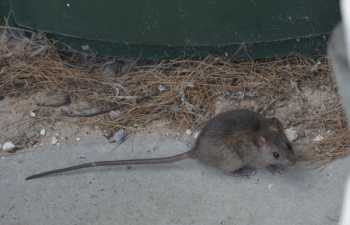Ariceli Samaniego-Herrera (School of Biological Sciences, University of Auckland, New Zealand) and colleagues have published in the Journal of Applied Ecology on a way to assess the success of alien rat eradications on islands without waiting the customary two years. The technique should have implications for the several eradication efforts underway on or planned for islands that support ACAP-listed albatrosses, petrels and shearwaters (click here for an example).
The paper’s summary follows:
$11. Eradication of introduced rodents on islands is increasingly implemented as a conservation tool. Aerial baiting, currently the main eradication technique, provides no information on whether eradication has been achieved. Success is usually evaluated after a standard period of 2 years with no sign of rodents.
$12. We describe a novel approach to assess success of eradication efforts based on a project to eradicate ship rats Rattus rattus from Isabel Island (82 ha), Mexico. We used detection and home range parameters obtained from a capture-recapture study completed prior to aerial baiting to build a spatial-survey model that predicts probability of eradication after the treatment.
$13. The spatial-survey model estimated a > 99% probability of success after 2 surveys with no rats detected. This approach can be used to make eradication projects more cost-effective. Survivors, if any, could be located and dispatched by localized control methods. This avoids repeat aerial baiting of the whole island if failure becomes apparent.
$14. This model is a useful tool for (a) assessing the probability of eradication within weeks, rather than years of an operation, and (b) predicting the required survey effort to achieve a probability of success consistent with the costs and risks of falsely declaring eradication success.
$15. Synthesis and applications. Rapid assessment of success after rodent eradication efforts on islands results in financial savings by potentially reducing the duration of the projects. Improvements in biosecurity guidelines might also accrue as delays in detecting rats after an operation may confound their identification as offspring of survivors or re-invaders. Advanced techniques and predictive modelling will increase confidence among partners and donors and allow more efficient achievement of regional programs.”

An unwelcome Black Rat on an Australian island
Reference:
Samaniego-Herrera, A., Anderson, D.P., Parkes, J.P. & Aguirre-Muñoz, A. 2013. Rapid assessment of rat eradication after aerial baiting. Journal of Applied Ecology doi: 10.1111/1365-2664.12147.
John Cooper, ACAP Information Officer, 20 July 2013

 English
English  Français
Français  Español
Español